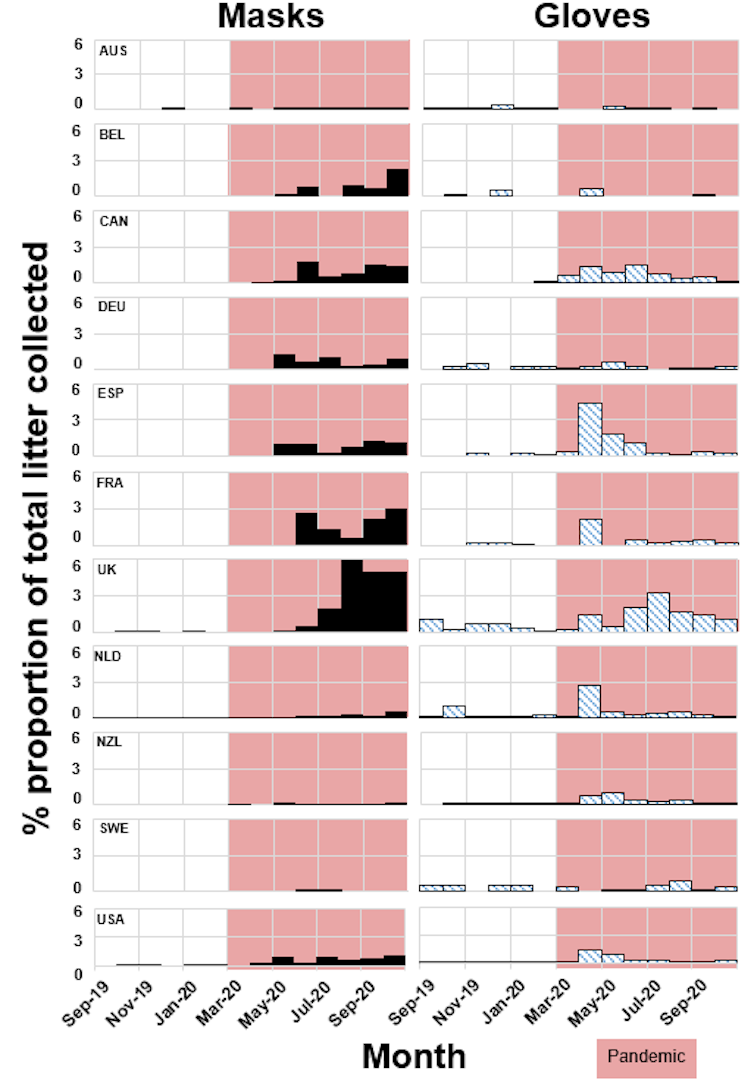/ground-report/media/post_banners/wp-content/uploads/2021/12/Trash-from-face-masks-increased-by-9000-in-8-months.jpg)
Ground Report | New Delhi: Trash from face masks increased; The arrival of the pandemic caused a phenomenon that for many seemed impossible: reducing greenhouse gas emissions, a symptom of the slowdown in world economies. However, while emissions were dissipating, in the shadows another type of pollution increased and without obstacles that promised to leave its mark for the next 400 years and that was none other than the rubbish caused by masks.
How to Reduce & Dispose of Our PPE Waste More Responsibly- Read Here
Trash from face masks increased
A study carried out in the summer of last year already warned that about 129,000 masks and 65,000 million stamina were being used per month. Figures that set off alarms among administrations and NGOs concerned about the possible impacts on nature caused by the abandonment of these wastes.

Now, experts from the University of Portsmouth, in the United Kingdom, expose in a new study that, indeed, the waste of masks increased by almost 9,000% from March to October 2020, thus demonstrating "a direct relationship between the laws national laws and the appearance of residues related to COVID-19 ”.
ALSO READ: Babri Masjid should be reconstructed: JNU Students Union Vice President
“In general, the study shows the impact that legislation on the use of elements such as masks can have on their appearance as garbage. We found that trash-filled masks had an exponential increase since March 2020, resulting in an increase of more than 80 times by October 2020. There is a clear need to ensure that the requirement to use these items is accompanied by educational campaigns to limit their release into the environment, ” exclaims Keiron Roberts, Professor of Sustainability and the Environment at the University of Portsmouth.
Our COVID-19 litter fingerprint
For this work, published in the journal Nature Sustainability, the authors used two open-source databases, the extensive "COVID-19 Government Response Tracker" being one of them and a garbage collection application called "Litterati" the other base of information.
With these tools, the researchers were able to map the policy responses of the 11 countries chosen for the study and obtain a baseline of the proportions of garbage from September 2019 to the first six months of the pandemic.
“In April 2020, it was starting to look like there were some small positives to the decrease in human activity caused by the closure, with improvements in air quality and water quality. The reduction in human activity also saw reports of animals returning to towns and cities. At the same time, reports began to emerge of the appearance of masks and gloves on beaches and streets, where they had not been before, ”says Keiron Roberts.
ALSO READ: Climate change threatens one of the Bengal tiger’s last refuges
And, with the data from the tools, the researchers were able to reveal several trends during the pandemic, which had their greatest attention since March 2020, when the garbage due to masks remained low, but with the prospect of increasing. By October of that year, and after the WHO recommendations to use the masks, the related waste increased dramatically to unsustainable limits.
pandemic garbage
“Despite millions of people being told to wear face masks, little guidance was provided on how to dispose of or recycle them safely. Without best disposal practices, an environmental disaster looms. Most masks are made from long-lasting plastic materials and, if discarded, can persist in the environment for decades or hundreds of years, ”says Keiron Roberts.
In this sense, it confirms that masks in the short term act as a potential vector to transmit the coronavirus, while in the medium and long term they can collapse human infrastructures, such as sewers, or kill small or medium organisms.
“We need to prevent this pandemic garbage from becoming a lasting legacy. There are two important messages to learn from this study. First, COVID-19 was a major factor in the emergence of mask garbage, and second, government policies and legislation can have a major impact on the composition of garbage. New policies must have well-structured advice and, more importantly, infrastructure to help eliminate waste, ”concludes Keiron Roberts.
You can connect with Ground Report on Facebook, Twitter, Instagram, and Whatsapp. For suggestions and writeups mail us at [email protected]